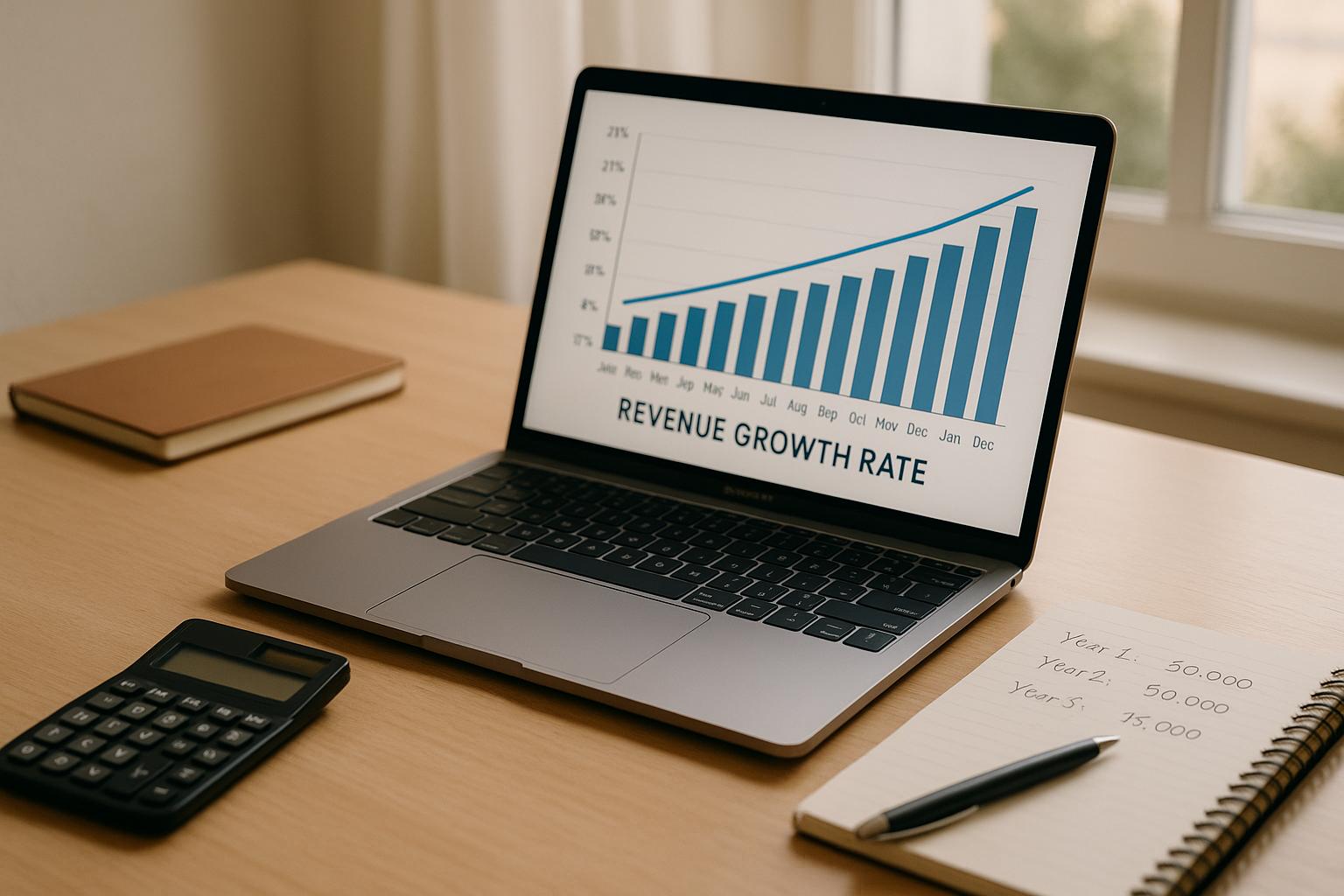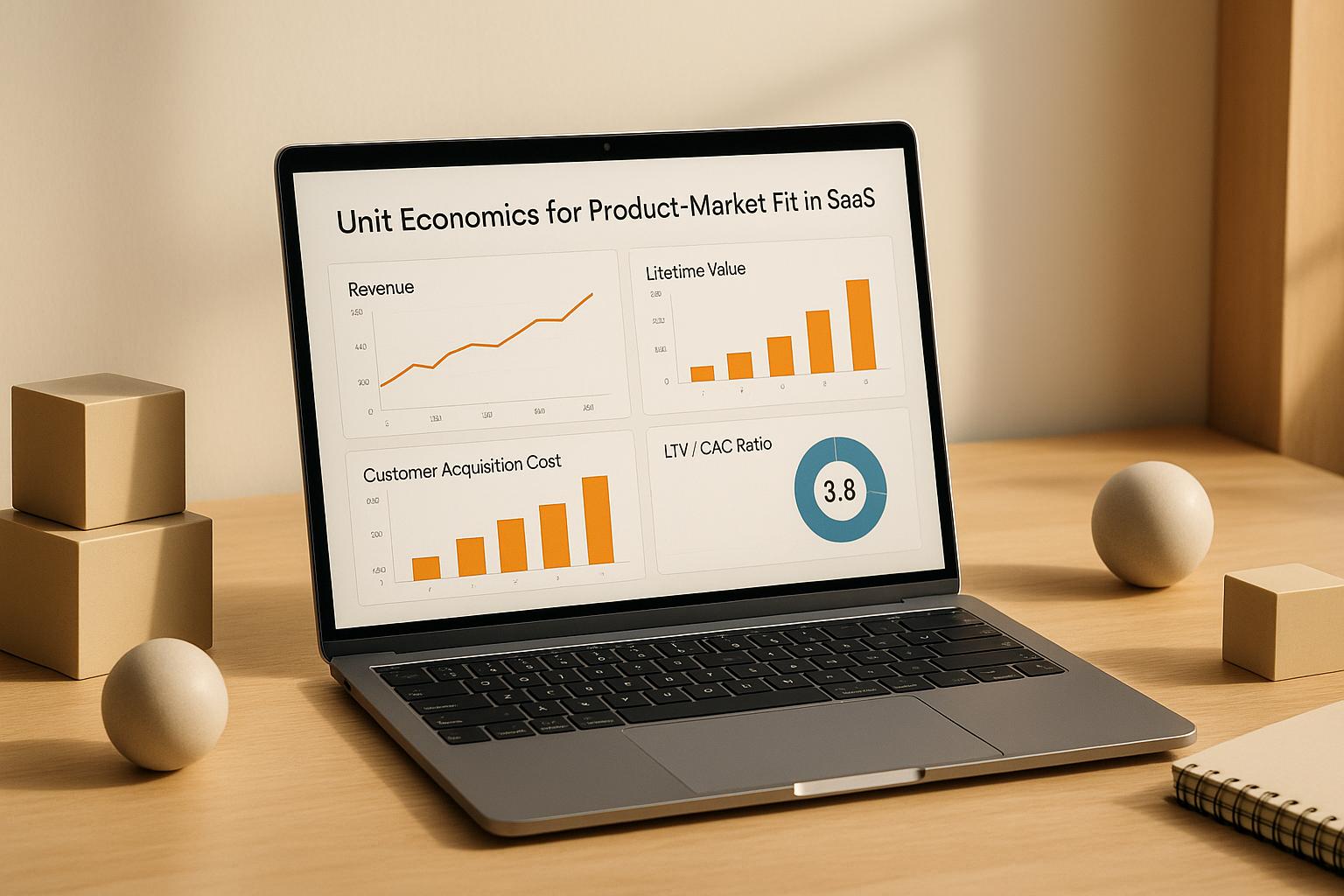Best Practices for Real-Time Predictive Dashboards

Real-time predictive dashboards combine live data with advanced analytics to help businesses predict trends and make smarter decisions. They’re essential for industries like healthcare, retail, and finance to stay ahead in a fast-changing world.
Key Benefits:
- Anticipate Change: Spot trends early and adjust strategies.
- Optimize Resources: Allocate resources efficiently based on predictions.
- Track Performance: Monitor KPIs live to meet goals.
Best Practices:
- Simple Layouts: Highlight critical metrics and group related data logically.
- Use the Right Visuals: Line charts for trends, heat maps for patterns, and bar charts for comparisons.
- Combine Live Data & Predictions: Use tools like Apache Kafka and clear labels to separate actual vs. forecasted data.
- Ensure Data Accuracy: Automate validation checks and use time-series databases like InfluxDB for real-time integration.
- Focus on User Experience: Customize views for roles, make dashboards mobile-friendly, and add interactive features.
Tools to Consider:
| Tool | Strengths | Ideal Use Case |
|---|---|---|
| Tableau | Advanced visuals | Predictive trend analysis |
| Power BI | Microsoft integration | Office 365 users |
| Grafana | Time-series monitoring | Technical monitoring |
| Looker | Scalable analytics | Large-scale data processing |
Predictive dashboards are transforming industries by improving decision-making, reducing risks, and driving efficiency. Ready to build one? Let’s dive into the details.
Key Elements of Real-Time Dashboard Design
A well-crafted real-time predictive dashboard can be a game-changer for decision-making.
Keeping the Layout Simple and Clear
Place the most critical metrics where they can be seen instantly. Group related metrics together to create a logical flow that’s easy to follow.
"If there is too much unnecessary information on the page it can be overwhelming and focus can be misdirected to unimportant details", notes the Splunk Blog Authors.
To keep things organized, divide metrics into these key categories:
| Category | Primary Metrics | Update Frequency |
|---|---|---|
| Current Performance | Revenue, Conversion Rates | Real-time |
| Predictive Indicators | Forecast Accuracy, Trend Analysis | Every 15 minutes |
| Risk Metrics | Anomaly Detection, Alert Status | Continuous |
Once the layout is clear and logical, the next step is to ensure the visuals effectively convey the predictive insights.
Choosing the Right Visuals for Predictions
Select visuals that best represent your data and suit the needs of your audience.
For predictive dashboards, here’s how to match visual types with specific purposes:
- Line charts: Great for showing trends over time and forecast projections.
- Heat maps: Useful for highlighting patterns and complex relationships.
- Bar charts: Perfect for comparing categories and visualizing differences.
With the visuals in place, it’s time to focus on combining live data with predictive analytics.
Combining Live Data with Forecasts
Integrating live data with predictive insights ensures the dashboard stays dynamic and forward-looking. Build a system that processes high-speed data accurately. Tools like Apache Kafka or AWS Kinesis are excellent for handling live data streams. Use automated labeling to clearly separate actual data from predictions.
1. Data Streaming Architecture
Set up a pipeline that processes high-speed data while ensuring accuracy. Use in-memory analytics to handle time-sensitive updates instantly.
2. Visual Integration
Use consistent color coding and labels to clearly differentiate between historical and predicted data. This helps users quickly interpret the information without extra effort.
3. Interactive Elements
Add interactive features so users can dive deeper into specific metrics without overcrowding the main dashboard. This keeps the main view clean while offering more detail when needed.
Best Practices for Managing Data
Maintaining Accurate and Reliable Data
To make reliable predictions, your data needs to be accurate. Automated validation checks can help spot anomalies and keep data consistent.
| Data Quality Component | Purpose | Implementation Method |
|---|---|---|
| Validation Rules | Spot errors | Automated checks based on set criteria |
| Cleansing Process | Fix inaccuracies | Scheduled data cleaning scripts |
| Quality Monitoring | Track data quality | Dashboards with automated quality metrics |
Once your data is clean and reliable, the next step is to integrate it into your dashboard for real-time insights.
Techniques for Real-Time Data Integration
Tools like Apache Kafka are great for processing large streams of data in real time. For better performance, consider time-series databases such as InfluxDB or Apache Druid. These databases are designed to handle continuous streams far more efficiently than traditional ones.
"Combining historical data with real-time data provides valuable context for current performance insights. Historical data allows for the comparison of current performance against past benchmarks, enabling more informed decision-making."
With real-time integration set up, the focus shifts to keeping your data safe.
Protecting Data and Ensuring Privacy
When handling sensitive data, security is a must. Use encryption to safeguard data, implement role-based access controls to limit who can access it, and conduct regular audits to identify vulnerabilities. Keep your security protocols updated to stay ahead of new threats.
Improving User Experience in Dashboards
Customizing Views for Different Roles
Predictive dashboards work best when designed to meet the specific needs of each user role. This approach ensures that key insights are both relevant and easy to access. By tailoring views to individual roles, users only see the metrics that matter to their responsibilities.
| Role | Key Metrics |
|---|---|
| Executives | Strategic KPIs and financial forecasts for monitoring overall performance |
| Department Managers | Team performance metrics and resource allocation for managing operations |
| Front-line Teams | Task-specific data and real-time alerts for daily activities |
Allow users to save their preferred configurations, making it simple to revisit key data quickly.
After customizing views, it's important to make sure dashboards are accessible across all devices.
Making Dashboards Mobile-Friendly
Dashboards that work seamlessly on mobile devices are a must for today’s workflows. Responsive design ensures that dashboards adjust to any screen size without sacrificing usability.
To optimize for mobile, focus on features like simplified layouts, touch-friendly controls, and fast loading times. These adjustments make dashboards practical and efficient on smaller screens.
Once mobile optimization is handled, interactive elements can take user engagement to the next level.
Adding Interactive Features
"A good dashboard doesn't simply show data, it actively informs users of changes or out of the ordinary."
Interactive features can transform a dashboard into a more dynamic tool. Some key examples include:
- Drill-down capabilities: Let users dive deeper into predictive trends for detailed insights.
- Custom date ranges: Allow users to adjust time frames for tailored analysis.
- Dynamic filtering: Offer options to focus on specific data sets or segments.
- Collaborative tools: Enable sharing insights and tagging teammates directly.
To keep performance smooth, use asynchronous data loading when integrating these features. This ensures the dashboard remains fast and responsive.
sbb-itb-e766981
Steps for Setting Up and Maintaining Dashboards
Selecting the Right Tools
Choose tools that work seamlessly with your current systems and offer features for real-time data processing and visualization.
| Tool | Key Strengths | Ideal Use Case |
|---|---|---|
| Tableau | Advanced visuals, easy interface | Predictive trend analysis |
| Power BI | Microsoft integration, AI insights | Organizations using Office 365 for analytics |
| Grafana | Time-series monitoring, plugins | Technical monitoring and analysis |
| Looker | Scalable analytics, data modeling | Large-scale predictive data processing |
When evaluating platforms, look at factors like compatibility with your data sources, processing power, and built-in security. Make sure the tool can handle your expected data volume without performance issues.
Once you've chosen the right tools, the next step is ensuring your team knows how to use them effectively.
Training Teams to Use Dashboards
According to SHRM (2022), 76% of employees are more likely to stay with companies that provide ongoing training. To encourage dashboard adoption, focus on:
-
Role-Specific, Hands-On Training:
Design practical modules tailored to daily tasks, include interactive exercises using real data, and emphasize features that support decision-making. -
Ongoing Support:
Provide detailed documentation, create video tutorials, and assign expert users within teams to quickly address questions or issues.
With proper training in place, your team will be ready to use dashboards effectively. But to keep them useful, regular updates are essential.
Updating Dashboards Over Time
Keeping dashboards relevant means scheduling regular reviews and updates. Plan quarterly reviews to evaluate their performance and ensure they still meet user needs.
Key areas to focus on during updates include:
- Data Source Integration: Add new data sources as needed.
- Performance and Feedback: Optimize speed and incorporate user suggestions.
- Business Goal Alignment: Adjust metrics and visuals to match changing objectives or data trends.
When making changes, avoid overloading the dashboard with unnecessary features. Every new addition should improve decision-making and keep the interface clean.
Phoenix Strategy Group advises maintaining a structured process for monitoring data quality. This ensures dashboards continue to deliver accurate and actionable insights, especially for financial decisions.
Examples of Predictive Dashboards in Action
Once predictive dashboards are implemented, their impact can be seen across various industries. Here’s how they’re making a difference in finance, retail, and healthcare.
Finance: Monitoring Risks in Real Time
Predictive dashboards in finance combine data from multiple sources to help monitor credit, market, and operational risks effectively.
| Risk Type | Dashboard Features | Key Benefits |
|---|---|---|
| Credit Risk | Real-time credit scoring, payment tracking | Identifies high-risk borrowers early |
| Market Risk | Live market data, trend analysis | Quick reactions to market changes |
| Operational Risk | System performance monitoring, anomaly detection | Minimizes disruptions |
Phoenix Strategy Group helps growth-stage companies leverage these dashboards to stay on top of financial risks and maintain stability. By combining real-time data with advanced analytics, they enable smarter, faster decision-making.
Retail: Forecasting Demand and Managing Inventory
Retailers rely on predictive dashboards to anticipate customer demand, manage inventory, and create personalized shopping experiences. By analyzing data like sales trends and even weather patterns, these dashboards help businesses:
- Anticipate demand shifts
- Keep inventory at optimal levels
- Make customer-focused decisions
- Cut costs through streamlined operations
This data-driven approach ensures retailers can adapt quickly to changing market conditions while keeping customers satisfied.
Healthcare: Tracking Patients and Predicting Outcomes
Healthcare providers like UCSF use predictive dashboards to monitor patients, reduce readmissions, and allocate resources more effectively. These tools are reshaping patient care by enabling:
- Real-time patient monitoring and alerts
- Smarter resource management
- Preventive care through early intervention
"Predictive dashboards enable healthcare providers to move from reactive to proactive patient care, significantly improving outcomes through early intervention", says a UCSF healthcare analytics specialist.
These examples showcase how predictive dashboards are driving meaningful changes, offering businesses the tools to make smarter, data-driven decisions.
Building Better Predictive Dashboards
Key Practices for Success
Creating reliable predictive dashboards starts with high-quality data. To ensure success, focus on three essential areas:
| Key Area | Core Components | Benefits |
|---|---|---|
| Design Basics | Clear layout, effective visuals | Better understanding and usability |
| Data Handling | Real-time updates, quality checks | Consistent and accurate predictions |
| User Experience | Custom features, mobile-friendly access | Higher adoption and productivity |
"Predictive analytics is only as good as the underlying model and the most recent data, which is generated by people with choices and habits that change frequently." - insightsoftware
By addressing these areas, businesses can create dashboards that not only provide insights but also drive meaningful actions.
Practical Steps for Businesses
To get the most out of predictive dashboards, businesses should focus on ongoing refinement. Here's how:
- Track Model Accuracy: Keep an eye on data shifts and model performance to avoid prediction errors.
- Streamline Data Processes: Prioritize data organization and aggregation to ensure dashboards load quickly, even with large datasets.
- Adapt to Change: Regularly update dashboards to reflect shifting business priorities and new trends.
These steps apply across industries - whether you're in finance, retail, or healthcare. Think of predictive dashboards as tools that grow with your business. By prioritizing data quality, usability, and continuous updates, you can make smarter decisions and achieve better results.
FAQs
How do you implement predictive analytics?
To set up predictive analytics in real-time dashboards, you need to align your business goals, pick the right data, design workflows, and choose suitable tools. The process relies heavily on having accurate data, smooth integration, and insights that lead to action.
Here’s a breakdown of the key steps involved:
| Step | Activities | What Matters Most |
|---|---|---|
| Strategic Planning | Define goals, pick relevant datasets, align KPIs | Clear objectives and meaningful data |
| Technical Setup | Configure data streams, integrate visualization tools | Smooth system integration |
| Workflow Design | Set up processes for sharing insights, create action plans | Strong team collaboration |
When diving into predictive analytics for dashboards, keep these points in mind:
- Use datasets that align closely with your business objectives.
- Leverage tools like Apache Kafka to process data in real time.
- Secure sensitive information with encryption and access controls, ensuring compliance with regulations like GDPR and CCPA.
Research highlights that success comes from balancing technical expertise with practical business needs. The goal is to create dashboards that not only handle data efficiently but also present insights in a way that drives meaningful actions.




